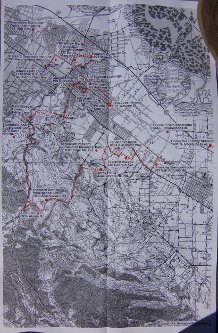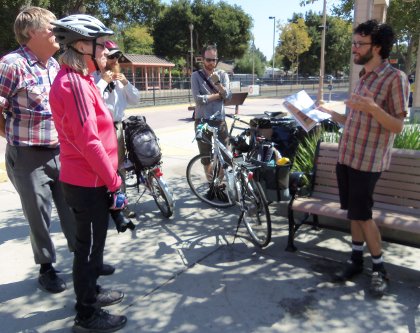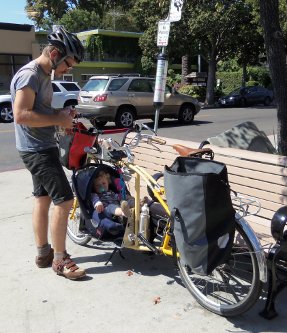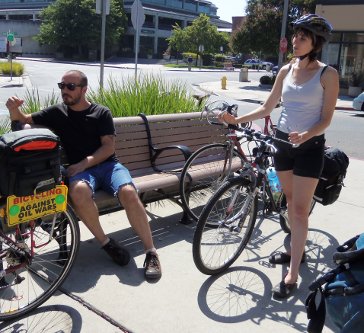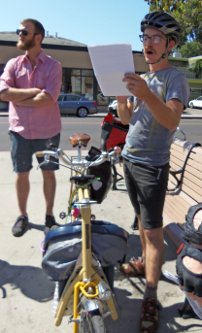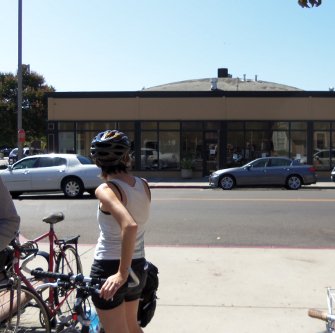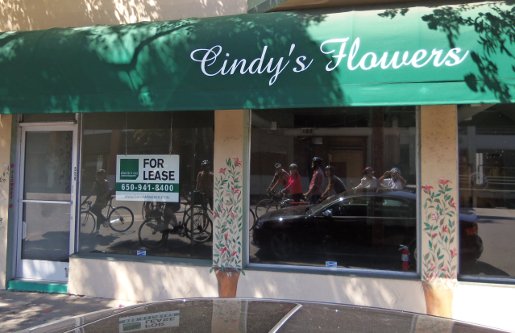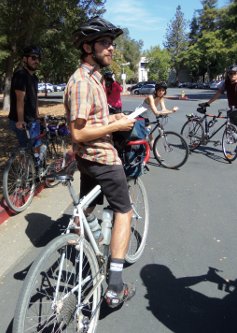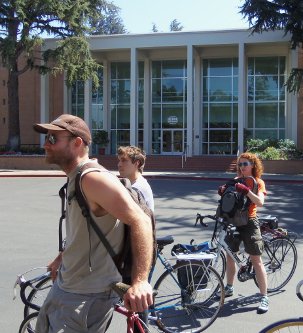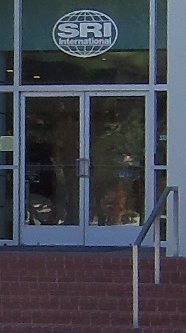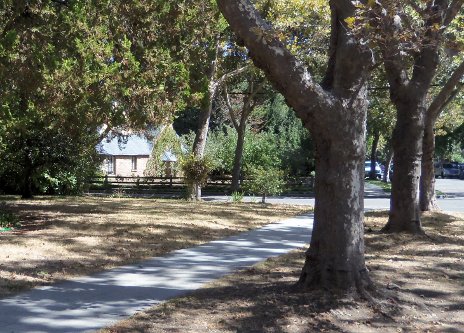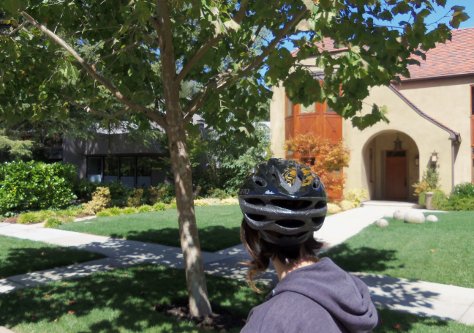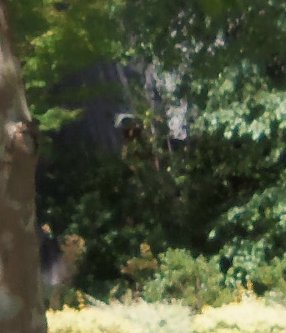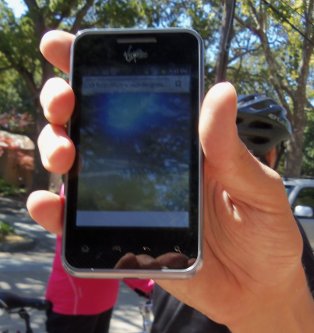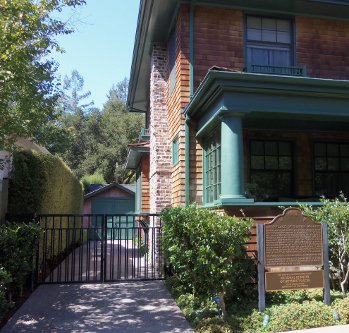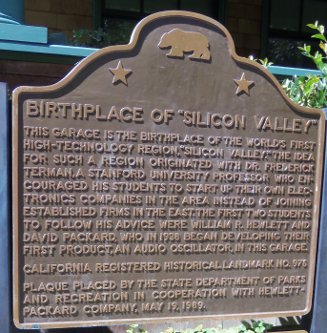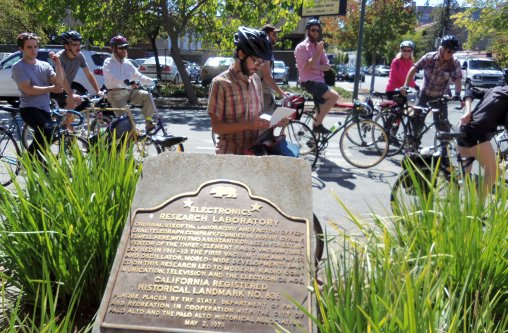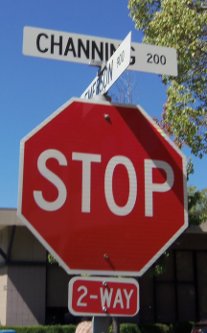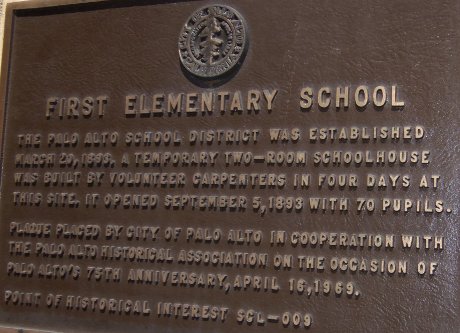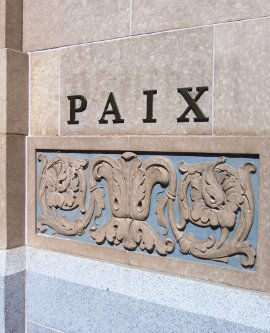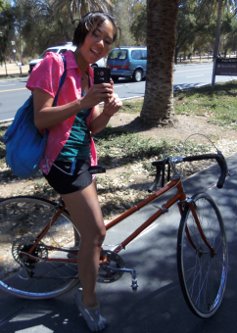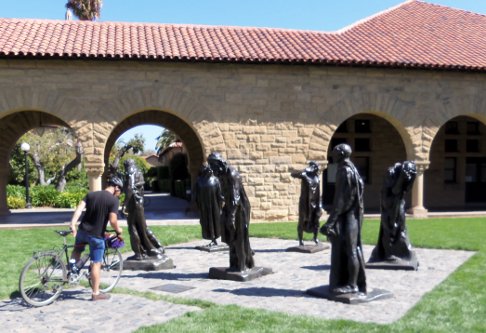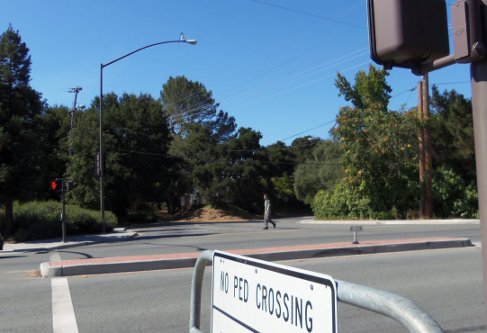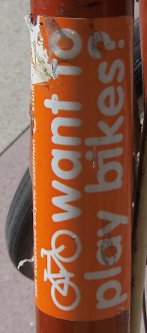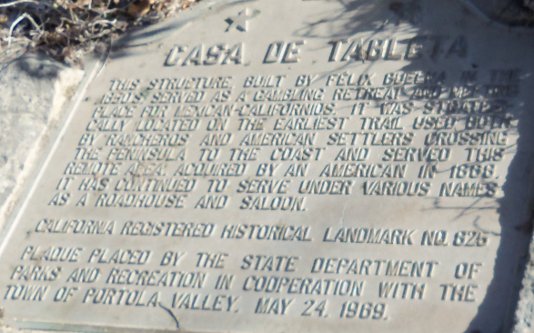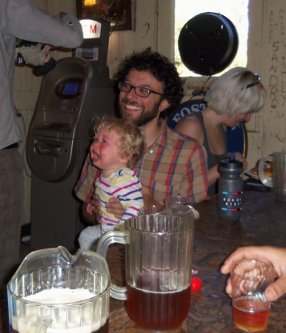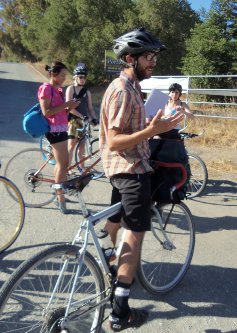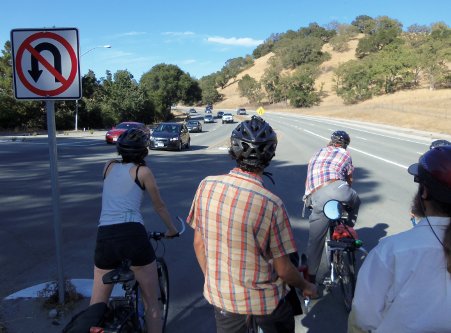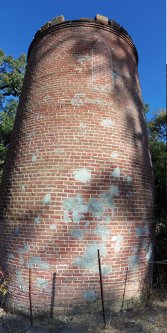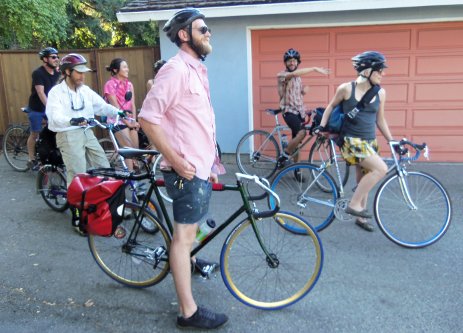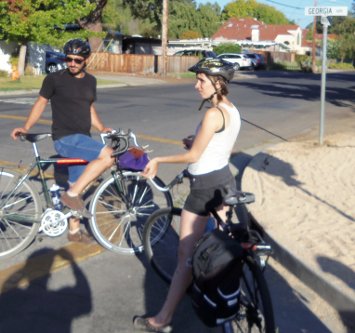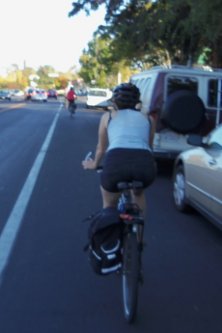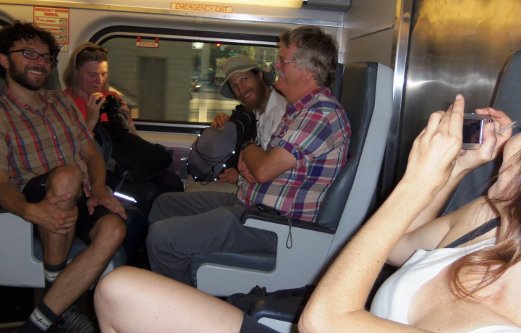For me the most interesting part of
Zero One this year was the bicycle tour of computing history.
Nick began by giving each of us a
copy of the map, including addresses of our stops and highlights.
He explained that there were many stops, so we didn't want to
spend too much time at any of them of we'd never finish. Also,
there would be a meal stop at the Alpine Inn.
The next stop was SRI, where a lot
of ideas for better ways to do things were worked out. Mostly they
were funded by money from the Defense Department's DARPA program.
When we stopped in the shade of that
tree in the middle of the road Nick pointed out that this whole
series of destinations were close to each other. Partly that was
because at that time the technology community was part of a fairly
small town. It's remarkable that so many key minds in a cutting
edge field lived and worked in such a small area.
Then we moved on to the former home
of the Homebrew Computer Club. There he pulled out a number of
nifty pieces of memorabilia. Click the picture of the
cleaners behind a tree to see some of those.
That house is where Steve Jobs lived
the last part of his life. We stopped there briefly. There are
several apple trees in the yard. I looked at them and got an
strong feeling I wanted to eat an apple. I was half way across the
fence, just intending to pick up one of the ones on the ground and
split with it, when the security guard appeared out of nowhere and
gave me clear instructions to get back on public property. Seems
to me that fruit is going to waste, and they have security making
sure it happens.
Our next stop was the street in
front of this house. Turns out that one of the oldest webcams on
the internet that's still up is looking out on the street here. We
hung around there until it captured our photons.
Nick showed us the picture on his
smartphone.
From there we went to the birthplace
of Silicon Valley, the garage behind this two story Sears house
almost identical to the one I lived in during the winter of
'80-'81 in Peoria, IL.
Funny enough, when I began my
electronics carreer, I was using Hewlett-Packard power supplies to
power my test bench. I suppose that means that garage means
something to me to.
A couple of blocks from there was
the place where the electronic vacuum tube had been invented,
maybe a generation earlier than HP. Before that the only tools to
control electricity they had were solenoids, motors, and
transformers. Since then many, many other applications have come
along. The stereo and computer are just two of them.
The site of the first elementary
school in Palo Alto has since been reused a few times. Currently
it's the piping for the backbone of the internet for much of the
west coast. Most of the international traffic that starts or ends
in California still goes through that building.
Teri joined the ride as we went
through downtown Palo Alto. She live blogged the rest of the ride
to twitter or something like that.
We stopped at Stanford just long
enough to use their plumbing and briefly look at some of the
public art.
We went down that little side street
and then left at the T. Somewhere in that block was the home where
Ken Kesey wrote One Flew Over the KuKoos Nest and started the
Merry Pranksters. Since those days it had been sold and the house
had been torn down and replaced. There was nothing from those days
to see, so we just rode by where it once was.
This building currently holds Alpine
Inn, where a lot of visionary products and companies have been
created over food from the grill and beer from the cooler. We
stopped there to have lunch and rest.
When we got to the Stanford Linear
Accelerator (SLAC) Nick explained that if you want to tour the
facility you need to sign up on their website and show up on the
one day of the month that they're doing that. One of the things
that made it notable in computing history was that back in the day
it had a hot tub where people who later became big names would
hang out and smoke marijuana. It could be that fueled creativity
somehow.
Lawrence explained that back in those days the tower had been the
kind of place that people could explore for fun. They sealed it
off after somebody had an accident there, or something like that.
Now it's easier to ignore.
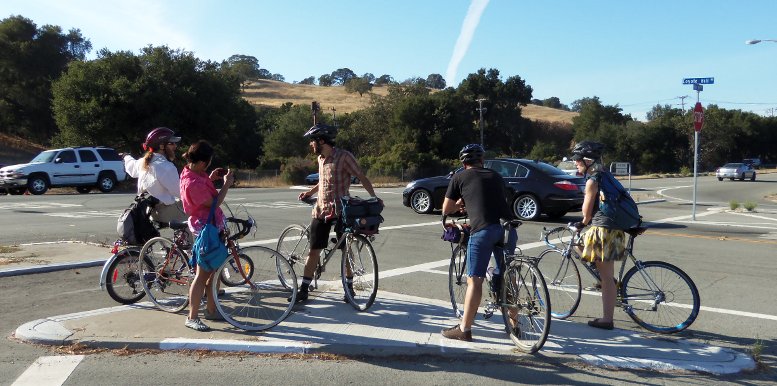
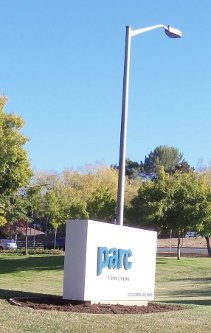
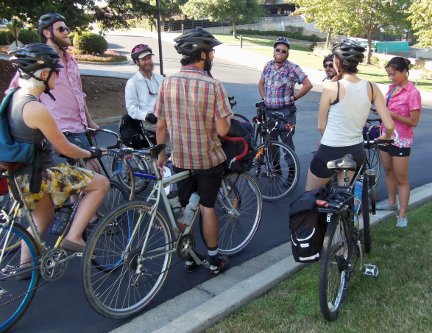
Both Steve Wosniak and Steve Jobs
started their computing careers at PARC, Xerox's Palo Alto
Research Center. There was considerable culture clash between this
office and the rest of Xerox. Many things that were thought up
here Xerox didn't want to make into commercial products. The
inventors solved this problem by quitting and starting their own
companies to make those things. Things like the computer mouse and
the graphical user interface that later went mainstream on the
Apple Macintosh started out as prototypes here.
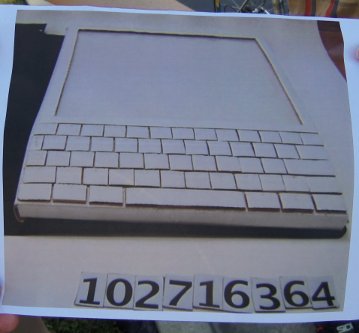
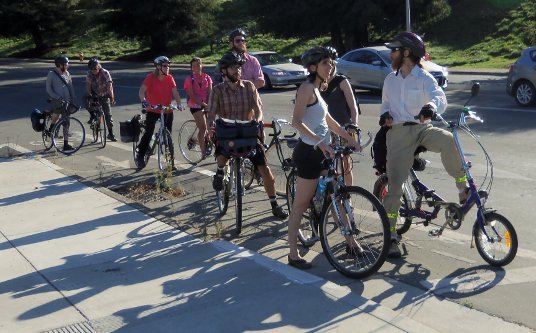
Alan Kay thought up the notebook
computer here. It took many years after that to become a practical
product, partly because battery and display technologies had to
mature a bit before the things really worked.
From there we rode on to the middle of the area with the highest
concentration of superfund pollution sites in the USA. Many of
them were early semiconductor fabrication plants. At the time
people just didn't realize how toxic the chemicals they were
working with were. It took cancer clusters in the surrounding
population to clue them in. Since then a lot of that kind of
manufacturing has been offshored.
Then we rolled past the house where
facebook was started in the garage. Just another suburban house in
Palo Alto or Menlo Park.
By that time it was late. We rolled
past where the first semiconductor integrated circuits were
manufactured without even stopping to do more than point "over
there". Then it was a mad dash to make the train to head down to
the rest of Zero One's festivities.
